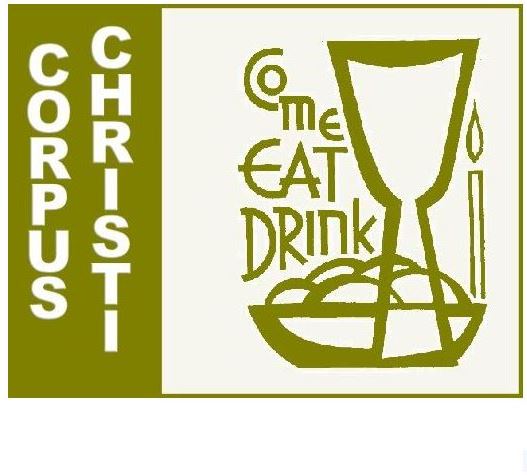6 June 2021
Exodus 24:3-8 Hebrews 9:11-15 Mark 14:12-16, 22-26
‘See what you are and become what you see’ (St Augustine)
The Eucharist is the greatest sacrament of the Church. It is, as the Apostolic Exhortation on Consecrated Life states, ‘the heart of the Church’s life’ (CL 95). It is the sacrament of Christ’s permanent presence with us. In the Eucharist, Christ is present in the assembly, in his word but, above all, in the bread and wine transformed into his body and blood shared among us.
During his life on earth we know that Jesus’ favourite way of expressing his love for people, especially for those who were rejected and unloved, was to share meals with them. For the Jews, shared meals were signs of acceptance and friendship. However, the Jews were careful about those with whom they shared meals. They invited only friends or important people. In seeking out sinners and tax collectors, Jesus was challenging their tradition. In eating with sinners, Jesus was making friends with those who had no friends. He was showing them respect and love and drawing them into the family of God. He was letting them see themselves in a new light and become a new people. Instead of a people with no hope, no future, they were God’s beloved children and citizens of his Kingdom.
When we celebrate the Eucharist we are celebrating a meal to which all are invited and where the poor and the marginalised in society are made to feel at home. In the words of Ivan Nicoletto, OSB: ‘At the heart of the Christian faith shines an open table without exclusion, where Christ is the chef, the host, and the food of life. The broken bread and the pouring wine manifests the Divine attitude to welcome especially for the ones who are broken-hearted, neglected, rejected and crushed.’
Eucharist and Communion go together. The Eucharist is God’s communion with us. It is at the same time our communion with one another. God loves us so much that he wants to be with us and wants us to be with him. Love tends towards union. When we love someone we want to be with them always. God desires to be with us in the most complete way possible. This is what happens in the Eucharist. God not only speaks his word to us. He enters into us. He takes possession of our hearts and minds and bodies. He becomes one with us. And he wants to make us one with him. The moment of communion in the Eucharist, when we eat the body of Christ and drink his blood, is the greatest moment of intimacy that can exist between God and us.
However, we cannot be in communion with the Lord without being in communion with one another. Communion is not a private devotion. This recognition of the oneness of all who partake of the Body and Blood of Christ is expressed in several ways in the Mass: in the common acknowledgement that we are sinners, the common responses, the songs of praise, the Gloria, the Creed, the acclamation of faith, the Great Amen, and the kiss of Peace. We act as one body because we are made one body in Christ. St. Augustine was accustomed to say to his Congregation as he held up the Sacred Host: ‘See what you are and become what you see.’
The Eucharist ends with a sending on Mission. ‘Go in Peace to love and serve the Lord’. We have to carry the Eucharist into the world. Just as the Lord has become our food, giving himself completely to us, so, too, we must give of ourselves for the sake of the world. We must become sources of nourishment for the world, as Christ has become a source of nourishment for us. This truth is memorably expressed in a contemporary hymn, based on a prayer attributed to St Theresa of Avila,
‘Christ has no body now but yours,
no hands but yours,
no feet but yours.
Yours are the eyes through which
Christ’s compassion must look out on the world.
Yours are the feet with which
He is to go about doing good.
Yours are the hands with which
He is to bless us now.’
We become the body of Christ when we receive Christ in Communion, but our mission is to be the Body of Christ for others. What does this mean? It means that, through our bodies, we carry Christ to others. It is our tongues which now speak the Good News to those longing to hear it. It is our feet now that Christ uses to walk the extra mile with people and to seek out those who have gone astray in life and lost their way. The figure of the Crucified Christ on the Cross that used to grace the north wall of SMA Chapel in Maynooth had no feet. The message for all of us who celebrated the Eucharist there was that we are now the feet of Christ. But it is not only our feet we give to Christ but our entire bodies – our hands, our minds and especially our hearts, so that in our touch, our words, our actions, Christ may touch and speak and act, and people may experience the loving embrace of God.
Michael McCabe SMA, Cork, June 2021

